What is Bentonite?
Bentonite is a very fine-grained clayey material with a high percentage of montmorillonite. Bentonite clay is a mined product. Usually, two types of bentonite, sodium and Calcium based, are found in our nature. Sodium-based bentonite is used for soil stabilisation work. For piling works, bentonite powder shall be mixed with water to make a slurry with specified parameters, and the bentonite slurry is used to stabilise the sides of the pile borehole.
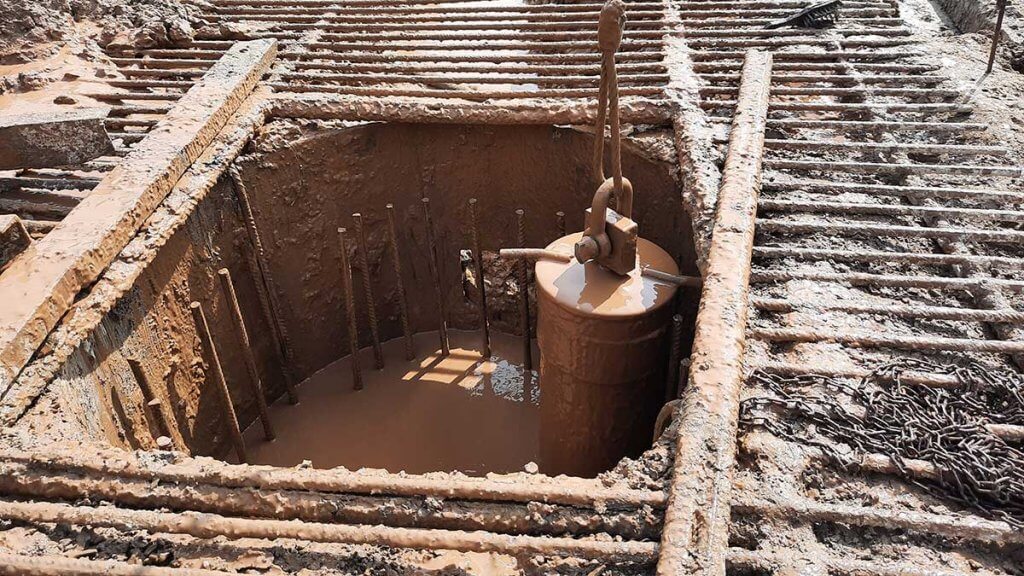
Also, Read: 4 Important Bentonite Test for Piling – Equipment & Procedure
Types of Bentonite:
As per IS:6186, there are two types of bentonite available, and depending upon the mineral content, which are as follows.
- Type-I: It is suitable for chemical industries, including decolourising petroleum, vegetable oils, and rubber.
- Type II: Used for the soil stabilisation work during boring and drilling. Type 2 mineral containing bentonite shall be of the following two grades:
- High grade, and
- Of-f-shore grade.
Procuring bentonite should be done from an established source per the following guidelines in IS: 6186.
Bentonite Uses in Piling:
Stabilisation of soil is essential for the pile’s quality, time and cost economy. Stabilisation of soil depends on soil characteristics, mainly on cohesive factors and angle of friction.
Types of Collapses During Pile Construction:
There are different types of bore collapse observed during piling operation, which are as under.
Collapse During Pile Boring:
During pile boring operation, the collapsing soil of the borehole increases the diameter of the pile borehole irregularly increases the clear cover of the reinforcement bars. This affects not only the pile’s quality but also the economy. This is due to over breakage. Pouring of concrete in pile bore will be more than the requirement to fill the over breakage volume.
Collapse Before pouring concrete:
After flushing the borehole bottom and before pouring concrete into the pile bore, if the side soils of the borehole collapse, again loose muck will be deposited at the pile bottom, which affects the quality and end bearing capacity of the pile adversely.
Collapse During Pile concrete:
During concreting, there is a chance of producing some soil pockets inside the build-up concrete, which may cause damage to the pile shaft and decrease the load-bearing capacity of the pile.
Factors Affecting Soil collapse:
The following factors played a significant role in soil collapse.
- Cohesiveness and angle of friction.
- The density of soil.
- Pore water pressure.
- Vibration.
- Borehole depth.
- The fluid inside the pile bore.
Soil Stabilisation using Bentonite slurry:
- The technology of soil stabilisation works only for sodium-based bentonite clay.
- It is a montmorillonite clay mineral that swells while coming in contact with water.
- Bentonite slurry contains exchangeable sodium cations(Na+). These cations(Na+) together with the cations generated in water exchanged by negatively charged ions, accumulated on soil particles of the vertical cut surface of pile borehole, will form an electric double layer resulting in stability of the vertical surface of the soil.
- The thixotropic property of bentonite suspension maintains the consistency of the slurry by virtue of electrical bonds created due to ionisation.
- During turbulence/disturbance in the suspension, jell materials become fluid by breaking the electrical bonds; otherwise, the suspension will form a jelly during undisturbed conditions.
Also, Read: Construction of pile foundation by Rotary Method
Bentonite slurry Property and Tests:
The powder mixed with water normally takes 12 hours of soaking time to get maturity. Soaked bentonite shall work like jell material. For stabilisation of vertical cut soil surface during boring of piles is based on consideration of the following properties:
Laboratory Test:
- Swelling Index: 100 % or more in 12 hours.
- Liquid limit: More than 300% and less than 450%
Field Test:
- Marsh viscosity: Between 30-40 seconds
- The pH value: Between 9 to 12
- The density of slurry: 1.05-1.12gm /cc
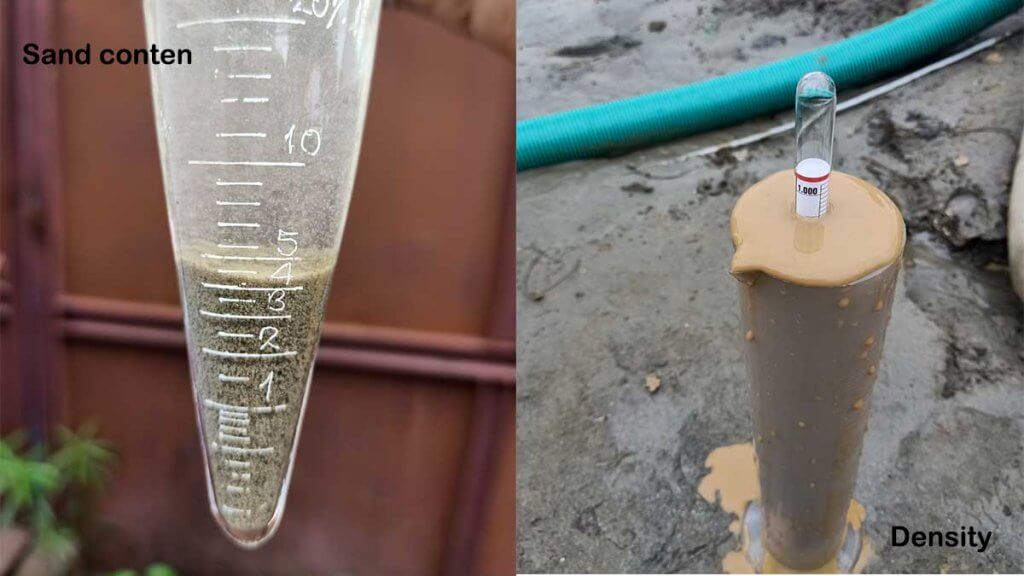
Also, Read: Vertical Pile Load Test Procedure – Kentledge Method
Bentonite Setup Installation:
Setup Installation for piling includes the following arrangement, which will be arranged/constructed as per site requirement.
- Water tank
- Mixing tank
- Swelling, curing and storing tank
- Pumping and recycling arrangement
- Desander
- Return tank
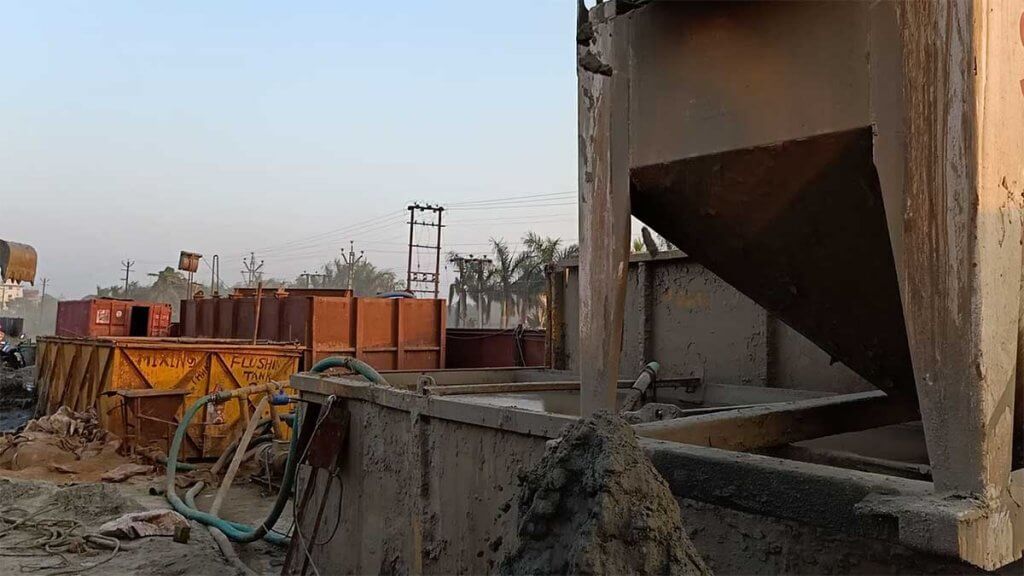
Also, Read: Lateral Load Test Pile – General Arrangement & Procedure
Bentonite mixing:
Bentonite will be mixed with the help of an agitator in a central mixing tank. Freshly mixed bentonite slurry is transferred to the swelling tank and will be allowed for swelling for a minimum of 12 hrs. Once the mixed slurry is in the swelling tank, it will be further re-mixed with the help of a pump by recycling the slurry into the same swelling tank. Then properly soaked and mixed bentonite slurry will be transferred to the storing tank from which it shall be pumped with the help of a vertical pump through the pipeline to the pile point for boring.
Bentonite recycling:
With Desander:
The returned bentonite with excavated muck coming out from the pile during concerning will be transferred to the Return tank through a desander. After completion of every pile construction, the slurry from the returned tank will be checked for density, Marsh viscosity, Sand content and pH value, and if found not to satisfy the requirement, it will be corrected by adding fresh bentonite slurry or otherwise, it will be disposed of. The tank will be adequately cleaned and refilled with fresh bentonite slurry for the next pile.
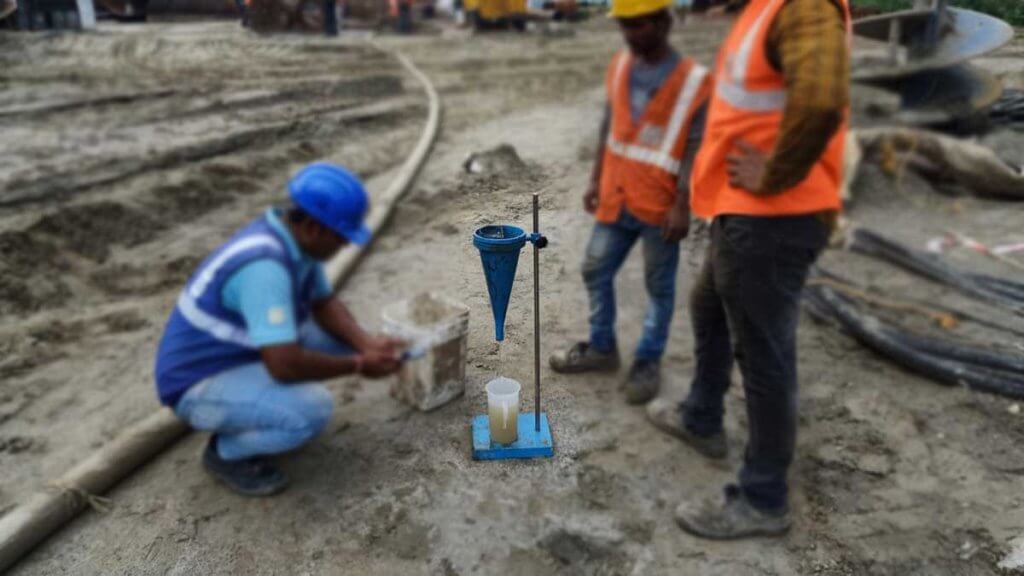
Also, Read: Construction of Pile Foundation by Direct Mud Circulation(DMC) method
Without Desander:
The returned bentonite with excavated muck will join the desilting tank through an open channel. The feeding tank will be positioned such that the returned bentonite from the piling location joins sedimentation and, after sedimentation, overflows into the feeding/recycling/pumping tank. The water pump will feed water for making bentonite slurry and transfer it to storage/feeding/recycling/pumping tanks. After the quality checking, it can be allowed for reuse.
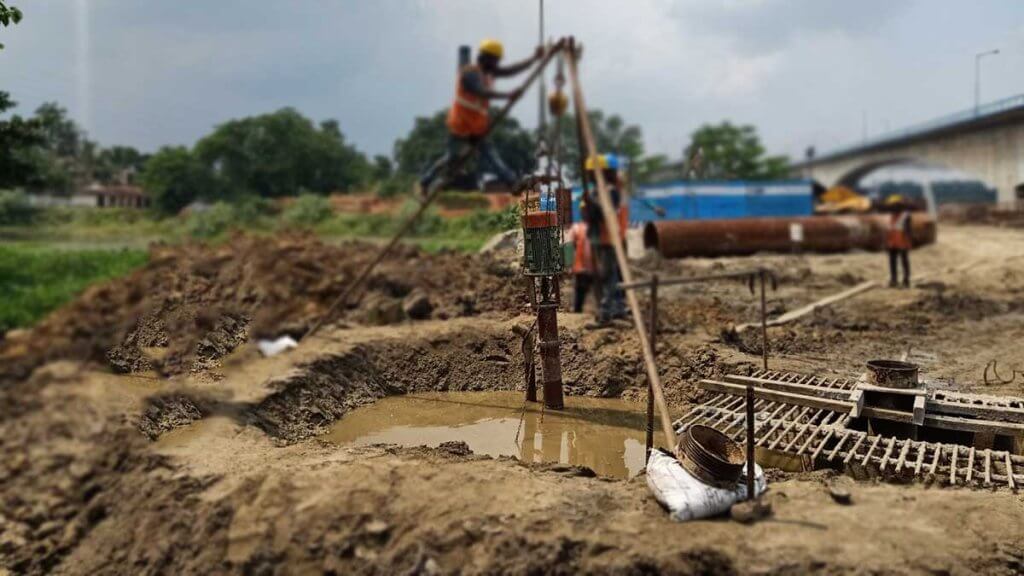
Also, Read: Tolerances for Foundation Piles – Important Guidelines
On completion of pile bore, after cage lowering prior to concrete pouring, loose dredged muck from the pile bore bottom shall be removed by flushing with fresh bentonite slurry of requisite density. Cleaning of the pile bottom shall be confirmed by collecting slurry from the pile bottom using a bottom sampler and comparing the specific gravity with the fresh slurry being pumped into the pile borehole.
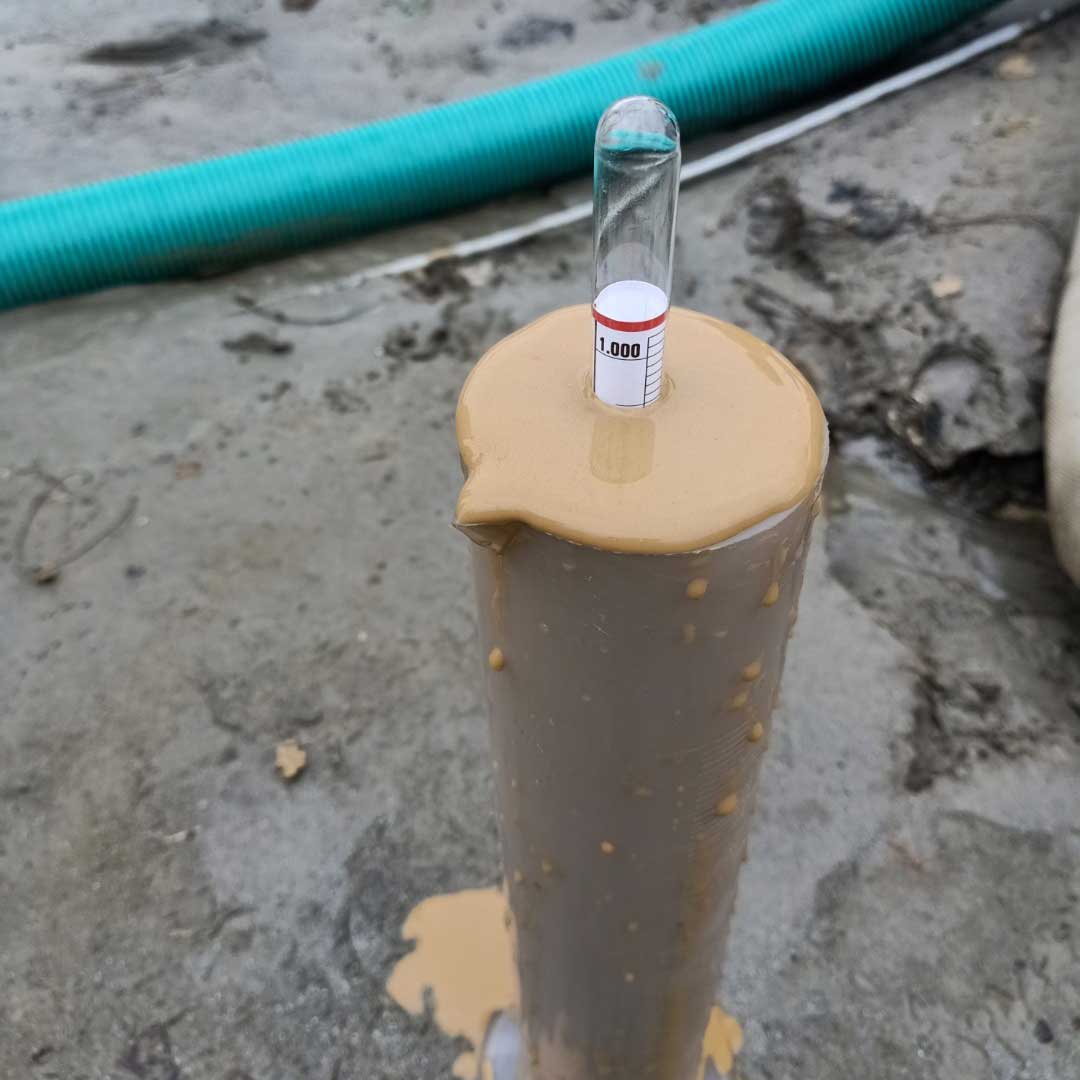


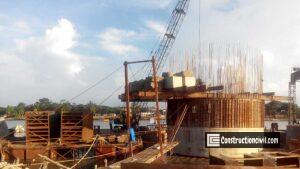
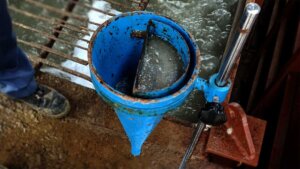
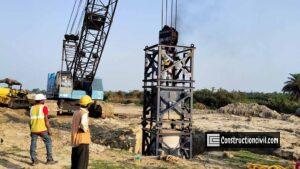
I am really inspired with your writing skills as well as with the format on your blog. keep up the excellent quality writing, it’s rare to peer a nice blog like this one today.
When I initially commented I clicked the “Notify me when new comments are added”
checkbox and now each time a comment is added I get the e-mails
with comment. Thanks to Construction Civil
Hi, just wanted to tell you, I enjoyed this blog
post. It was nice experience. Keep on posting!
Howdy! I could have sworn I’ve been to your blog before
but after looking at many of the posts I realized it’s new to me.
Anyhow, I’m definitely pleased I came across it and I’ll be bookmarking it and checking back frequently!
wonderful submit, very informative. I wonder why the opposite experts
of this sector don’t understand this. You should proceed your writing.
I’m sure, you’ve a great readers’ base already!, and Thanks for your information.
I’m truly enjoying the design and layout of your construction civil engineering blog.
It’s a very easy on the eyes which makes it much more pleasant for me to come here and visit more often, and thanks for the article.
Heya i am for the primary time here. I found this board and
I find It truly useful & it helped me out a lot.
I am hoping to offer something back and help others such as you helped me.
Yes ,
I am interested
Regards
Rajesh Kumar Vishwakarma
WDFCC Railway Project
Excellent article and easy to understand. You might have offered additional information about the desander explaining its function in the process. I am an English teacher, working with a book published by Cambridge: English for Engineers. In the chapter we are studying, a reference was made to the use of bentonite when boring holes for piles. Was curious to know a little bit more about bentonite and it brought me to your blog. Since I teach online, will most likely refer to this article to bring additional information about the use of bentonite in construction.
Best regards
Thanks for the guide, very easy to follow